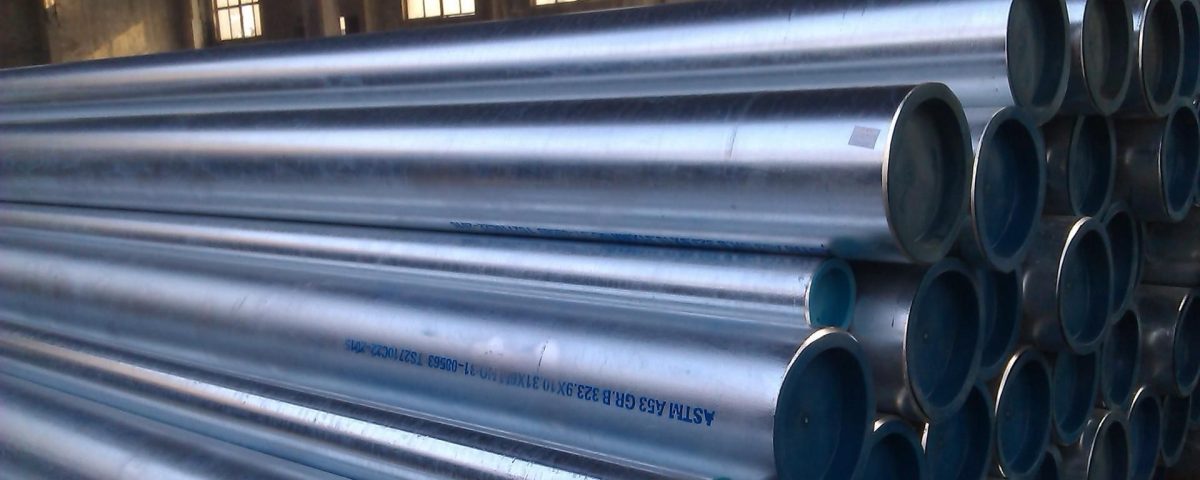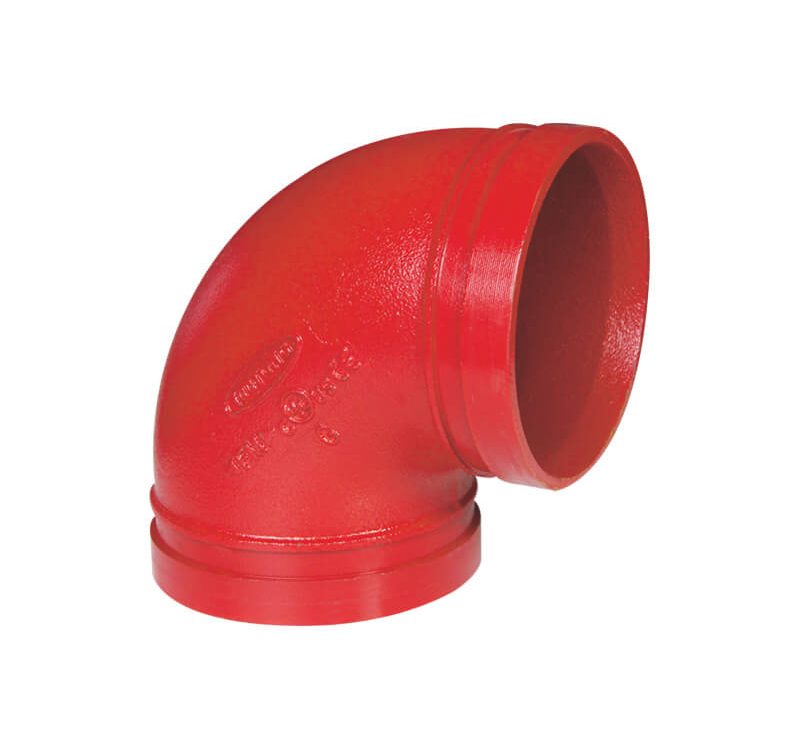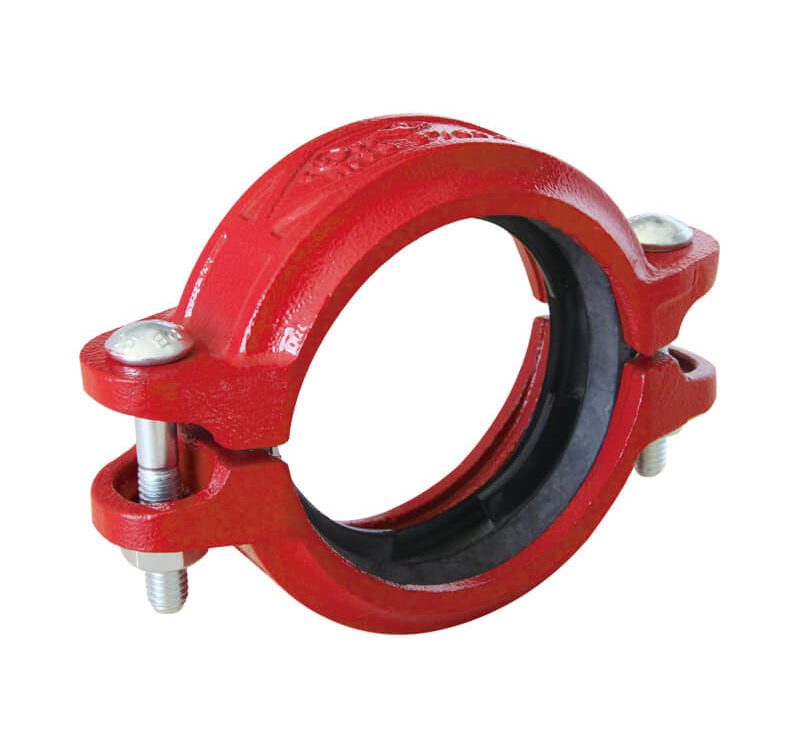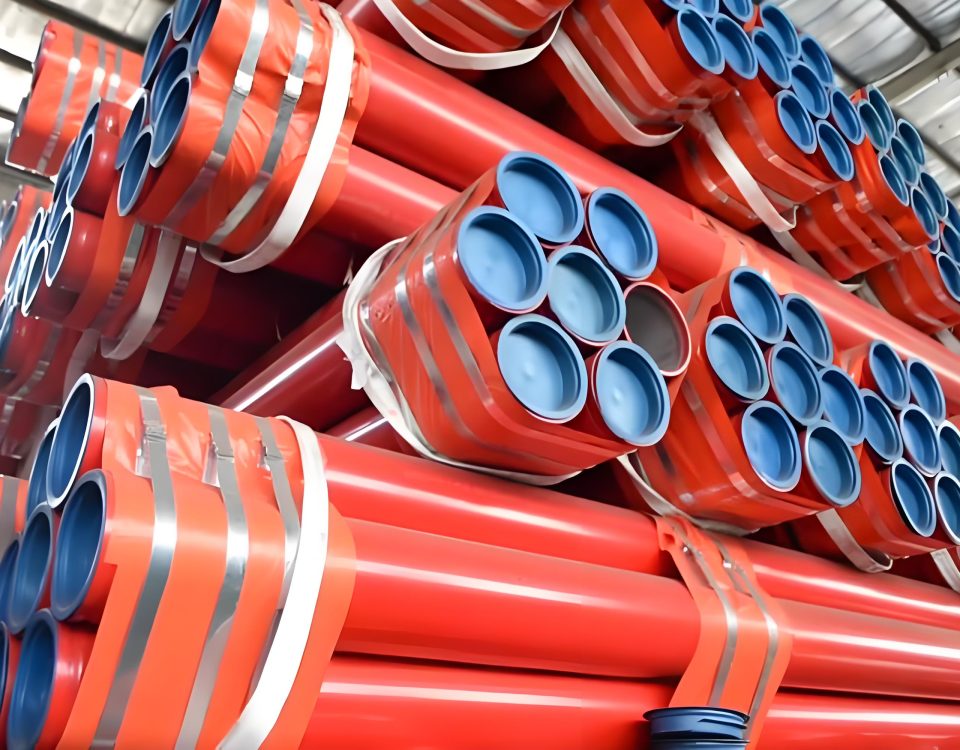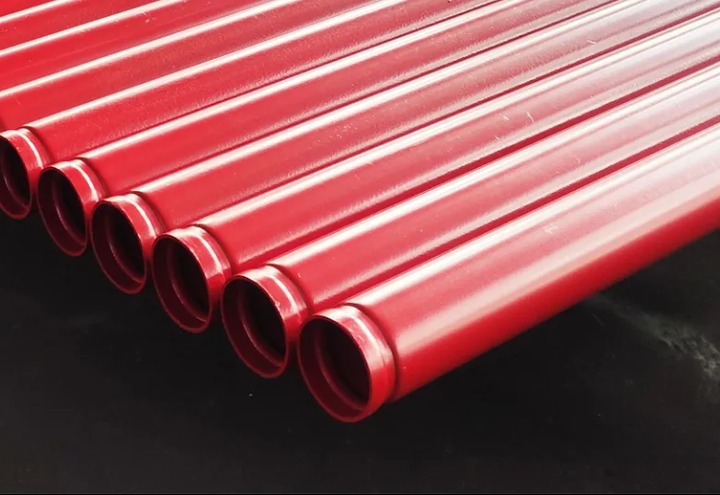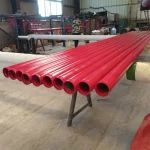
ASTM A795 ERW Fire Fighting Pipe
June 13, 2025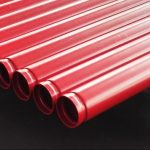
UL/FM Certified Fire Sprinkler Pipe
June 19, 2025Galvanized Steel Fire Sprinkler Pipe (GI Fire Pipes): A Comprehensive Guide
Understanding Galvanized Steel Fire Sprinkler Pipe: Composition and Manufacturing
Galvanized steel fire sprinkler pipes, often referred to as GI (Galvanized Iron) fire pipes, are carbon steel pipes coated with a zinc layer to enhance corrosion resistance, designed specifically for fire protection systems like wet, dry, preaction, and deluge sprinkler systems. ASTM A795, a key standard for these pipes, specifies both black and hot-dip galvanized welded (ERW) and seamless steel pipes for fire fighting applications, available in Grades A and B, with Grade B being more common due to its mandatory post-weld heat treatment (minimum 1000°F or 540°C). The galvanization process involves dipping the steel pipe in molten zinc, creating a protective coating of at least 1.5 oz/ft² (0.46 kg/m²), which shields the pipe from rust in moist environments, per ASTM A795 requirements. These pipes, often painted red (RAL3000) for identification, are critical in the $70 billion global fire protection market, per a 2024 IBISWorld report.
Galvanized steel pipe is a welded steel pipe with a hot-dip or electroplated zinc coating on the surface. Galvanizing can increase the corrosion resistance of the steel pipe and extend its service life. Galvanized pipe has a wide range of uses. In addition to being used for pipes for general low-pressure fluids such as water, gas, and oil, it is also used as a pipe in the petroleum industry, especially in offshore oil fields, oil well pipes, oil pipelines, chemical coking equipment, oil heaters, condensate coolers, coal distillation oil exchanger pipes, and pier piles, mine pits, support frames and other pipes. Thickness, width, length, OD, standard, material, etc. can all be customized.
|
O.D
|
Outside diameter tolerance
|
W.T
|
Thickness tolerance
|
|
|
21-219 mm
|
+/-0.03
|
0.6-14 mm
|
+/-0.02
|
|
|
length
|
2-12m, according to customer requirements
|
|||
|
standard
|
ISO 9001,2008,ASTM A53/BS 1387-1985
|
|||
|
Material
|
Q195/Q215/Q235/Q345
|
|||
|
Product Categories
|
Metallurgy, Mining and Energy
|
|||
|
Package
|
Bundled sales or as per customer requirements
|
|||
|
usage
|
1. Used for low pressure liquid transportation, such as water, gas and oil 2. Used for construction
|
|||
|
productive forces
|
10000 tons/month
|
|||
|
Processing
|
Threads, couplings and plastic covers are protected
|
|||
|
Payment
|
T/T, L/C(30% deposit)
|
|||
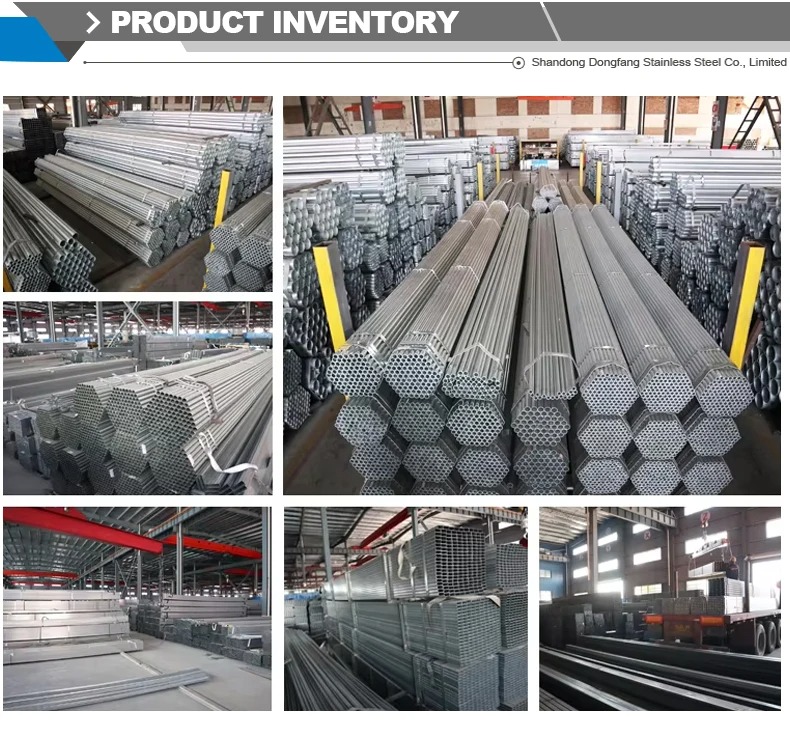
The composition of GI fire pipes includes carbon (max 0.25% for Grade B), manganese, phosphorus, sulfur, and silicon, ensuring strength and durability. The ERW manufacturing process starts with high-quality steel strips, cold-formed into a cylindrical shape, and welded using high-frequency electric resistance heating. The weld seam is heat-treated to eliminate brittle martensite, ensuring ductility, and the internal weld flash is removed for smooth water flow. Pipes range from NPS ½ inch to 10 inches, with wall thicknesses in Schedule 10, 30, and 40, balancing strength and weight. For example, a 4-inch NPS Schedule 10 pipe has a wall thickness of 0.120 inches, suitable for low-pressure sprinkler branches, while Schedule 40 (0.237 inches) handles high-pressure fire mains.
Quality assurance is rigorous. ASTM A795 mandates hydrostatic testing (up to 1000 psi based on size), nondestructive electric testing (NDT) like eddy current to detect weld flaws, and flattening tests to verify weld soundness. Manufacturers like abter steel company, cited in industry sources, achieve UL and FM certifications, ensuring compliance with NFPA 13 standards for sprinkler systems. Wheatland’s in-house galvanization uses 99.995% pure zinc, avoiding dross or debris, while their hot steam blowout process ensures a smooth interior, reducing corrosion risks. The zinc coating provides galvanic protection, where zinc sacrifices itself to protect the steel, extending pipe life by 30-50 years in wet systems, per a 2024 Journal of Materials Engineering study.
The table below outlines GI fire pipe properties:
| Property | Specification | Benefit |
|---|---|---|
| Material | Carbon steel, zinc-coated | Corrosion resistance, durability |
| Size Range | NPS ½” to 10” | Versatile for system sizes |
| Wall Thickness | Schedule 10, 30, 40 | Balances strength and weight |
| Zinc Coating | ≥1.5 oz/ft² | Protects against rust |
| Tensile Strength (Gr. B) | ≥60,000 psi | Handles high-pressure water flows |
GI fire pipes’ galvanization and robust testing make them reliable for fire protection, though their performance in specific systems requires careful consideration, as discussed next.
Applications and Performance in Fire Sprinkler Systems
Galvanized steel fire sprinkler pipes (GI fire pipes) are integral to fire protection systems, delivering water or suppressants in wet, dry, preaction, and deluge setups for commercial, industrial, and residential buildings. Wet systems, filled with water, are common in offices and homes, while dry and preaction systems, pressurized with air or nitrogen, suit unheated warehouses or data centers. Deluge systems, used in high-hazard areas like chemical plants, rely on open nozzles for rapid water delivery. ASTM A795 GI pipes, with their corrosion-resistant zinc coating, are permitted in both wet and dry systems, per NFPA 13, but their performance varies by application.
In wet systems, GI pipes excel due to their zinc coating, which resists rust from constant water exposure. A 2024 Journal of Pipeline Engineering study found that galvanized pipes in wet systems lasted 15-20% longer than black steel pipes, reducing maintenance costs. Their tensile strength (≥60,000 psi for Grade B) ensures they withstand pressures up to 300 psi, typical in fire mains, while Schedule 10 pipes (lighter walls) optimize hydraulics for sprinkler branches, delivering flows up to 500 gallons per minute for a 6-inch NPS pipe. Threaded, grooved, or flanged connections enhance installation flexibility, with grooved connections supporting pressures up to 2.5 MPa for NPS ≤250 mm, per industry standards.
However, in dry and preaction systems, GI pipes face challenges. Trapped water pools, combined with oxygen in compressed air, accelerate zinc corrosion, leading to pinhole leaks within 2-3 years, per a 2018 Sprinkler Age report. A 2016 Journal of Materials Degradation study noted that galvanized pipes corrode 50% faster than black steel in these conditions due to oxygen attacking the zinc layer. To mitigate this, FM-approved nitrogen generators, which replace oxygen with inert nitrogen (dew point < -50°F), extend GI pipe life to 150+ years, compared to 9.2 years with compressed air. NFPA 13 (2016) does not mandate GI pipes for dry systems, and standards like UFC 3-600-01 limit their use to deluge systems or exterior piping.
Joining methods matter. Threaded connections suit smaller pipes (≤NPS 4”), while grooved or flanged connections are ideal for larger diameters (>NPS 4”), ensuring leak-free performance. Red paint or epoxy coatings (250-550 µm thick) further protect external surfaces, especially in outdoor settings like parking structures, per NFPA 13 recommendations. The table below compares GI pipe applications:
| System Type | Suitability | Key Consideration |
|---|---|---|
| Wet | High, long-lasting | Zinc coating resists constant moisture |
| Dry/Preaction | Limited, requires nitrogen | Oxygen corrosion risks pinhole leaks |
| Deluge | High, corrosion-resistant | Suitable for high-hazard areas |
| Exterior Piping | High, with protective paint | Resists weather, humidity |
GI pipes’ corrosion resistance makes them ideal for wet systems, but nitrogen use is critical for dry systems to ensure longevity.
Corrosion Challenges and Mitigation Strategies
Corrosion is a primary concern for galvanized steel fire sprinkler pipes, as it can compromise system reliability, leading to leaks or blockages that impair fire suppression. The zinc coating on GI pipes acts as a sacrificial anode, corroding before the steel to prevent rust, a process called galvanic protection. In wet systems, this extends pipe life by 30-50 years, as the zinc forms a protective zinc carbonate layer when exposed to moisture, per a 2024 Journal of Materials Science. However, in dry and preaction systems, residual water and oxygen-rich air create a corrosive environment, attacking the zinc and causing pinhole leaks within 2-4 years, per a 2016 ECS Corrosion report. This rapid corrosion releases Zn²⁺ ions into discharge water, creating an environmental hazard, as levels often exceed 1000 mg/L, far above municipal limits of 30 mg/L.
To address this, nitrogen inerting is recommended. Dry Pipe Nitrogen Inerting (DPNI) using FM-approved nitrogen generators replaces oxygen with nitrogen, reducing corrosion by breaking the corrosion triangle (metal, oxygen, moisture). A 2017 A1 Sprinkler study found that GI pipes with nitrogen supervision lasted 162.3 years, compared to 9.2 years with compressed air, offering significant cost savings. NFPA 13 (2016) and UFC 3-600-01 discourage GI pipes in dry systems unless nitrogen is used, favoring black steel for its lower corrosion rate in these conditions. For wet systems, pre-charging pipes with nitrogen before water filling minimizes oxygen pockets, further reducing corrosion risks.
Coatings enhance protection. Beyond galvanization, epoxy or FBE (Fusion Bonded Epoxy) coatings (250-550 µm) shield internal and external surfaces, particularly in humid or chemical environments. Manufacturers like Wheatland Tube use advanced galvanizing processes with 99.995% pure zinc and hot steam blowouts to ensure debris-free interiors, minimizing corrosion initiation points. Regular maintenance, including draining trapped water in dry systems and testing discharge water for zinc levels, is critical. The table below summarizes corrosion mitigation:
| Challenge | Mitigation | Impact |
|---|---|---|
| Zinc Corrosion (Dry) | Nitrogen inerting | Extends life to 150+ years |
| Environmental Hazard | Monitor Zn²⁺ levels, treat discharge | Meets municipal regulations |
| Internal Corrosion | Epoxy/FBE coatings | Reduces rust, blockages |
| Maintenance | Regular draining, inspections | Prevents leaks, ensures reliability |
Proper mitigation ensures GI pipes remain effective, but their use in dry systems requires careful planning to avoid corrosion pitfalls.
Comparison with Other Fire Sprinkler Pipe Materials
Galvanized steel fire sprinkler pipes (ASTM A795) are one of several options for fire protection, alongside black steel, copper, CPVC, and ductile iron. Each material has unique properties, costs, and suitability. Black steel pipes, also ASTM A795-compliant, lack a zinc coating but are widely used due to their strength (≥60,000 psi tensile) and lower cost ($0.45-0.90 per foot vs. $0.50-1.00 for GI). In wet systems, black steel corrodes faster, but in dry systems, it outperforms GI, lasting 19.8 years with compressed air versus 9.2 for GI, per a 2017 A1 Sprinkler study. Nitrogen inerting equalizes their performance, making black steel a cost-effective choice.
Copper pipes, known for superior corrosion resistance, are smoother and handle high temperatures, ideal for high-risk areas. However, they cost $2.00-5.00 per foot, limiting their use to smaller systems, per a 2024 Journal of Fire Protection Engineering. CPVC pipes, lightweight and corrosion-resistant, are cost-effective ($0.30-0.80 per foot) for residential systems but lack the pressure capacity (175 psi max) for large-scale applications. Ductile iron pipes, with high strength and flexibility, suit underground or high-pressure systems but are heavier and pricier ($1.50-3.00 per foot).
GI pipes balance cost, durability, and corrosion resistance, especially in wet systems or exterior applications, per NFPA 13 guidelines. Their threaded or grooved connections suit diverse installations, unlike CPVC, which requires solvent welding. The table below compares these materials:
| Material | Cost per Foot (USD) | Corrosion Resistance | Best Use |
|---|---|---|---|
| Galvanized Steel (A795) | $0.50-1.00 | High (wet), low (dry) | Wet systems, exterior piping |
| Black Steel (A795) | $0.45-0.90 | Moderate | Dry systems with nitrogen |
| Copper | $2.00-5.00 | Very high | High-risk, small systems |
| CPVC | $0.30-0.80 | High | Residential, low-pressure |
| Ductile Iron | $1.50-3.00 | High | Underground, high-pressure |
GI pipes offer a versatile, cost-effective solution, but material choice depends on system type and environment.
Practical Considerations for Selecting GI Fire Pipes
Choosing galvanized steel fire sprinkler pipes requires balancing performance, cost, and system requirements. First, verify compliance with ASTM A795 and certifications like UL/FM, ensuring reliability, per AbterI’s standards. Select Schedule 10 for sprinkler branches or Schedule 40 for fire mains, based on pressure needs (up to 300 psi). For dry or preaction systems, pair GI pipes with nitrogen generators to prevent corrosion, as mandated by UFC 3-600-01. In wet systems, ensure proper galvanization (≥1.5 oz/ft²) and consider epoxy coatings for added protection.
Cost is a factor. GI pipes ($0.50-1.00 per foot) are 30% more expensive than black steel but cheaper than copper or ductile iron. Budget-conscious projects may favor black steel with nitrogen inerting. Environmental conditions matter—use GI pipes in humid or outdoor settings, with red paint or FBE coatings for extra protection. Installation ease, with threaded or grooved connections, suits fast-paced projects, per Octal Steel’s guidelines. Consult engineers to align pipe specifications with NFPA 13 and local codes.
The table below guides selection:
| Factor | Consideration | Recommendation |
|---|---|---|
| Standards | ASTM A795, UL/FM certified | Ensures safety, compliance |
| System Type | Wet, dry, preaction, deluge | Nitrogen for dry/preaction systems |
| Cost | $0.50-1.00 per foot | Balance with performance needs |
| Environment | Humid, outdoor | Use GI with coatings |
Proper selection ensures GI fire pipes deliver reliable fire protection.
Galvanized steel fire sprinkler pipes (GI fire pipes), compliant with ASTM A795, are a cornerstone of fire protection systems, offering corrosion resistance, strength, and cost-effectiveness. Their zinc coating excels in wet systems, extending life by 30-50 years, but dry systems require nitrogen inerting to prevent rapid corrosion. Compared to black steel, copper, CPVC, and ductile iron, GI pipes balance durability and affordability, making them ideal for diverse applications. Rigorous standards, certifications, and coatings ensure reliability, while proper selection and maintenance mitigate corrosion risks. By choosing certified GI pipes and adhering to NFPA 13, stakeholders can ensure safe, long-lasting fire protection systems.

